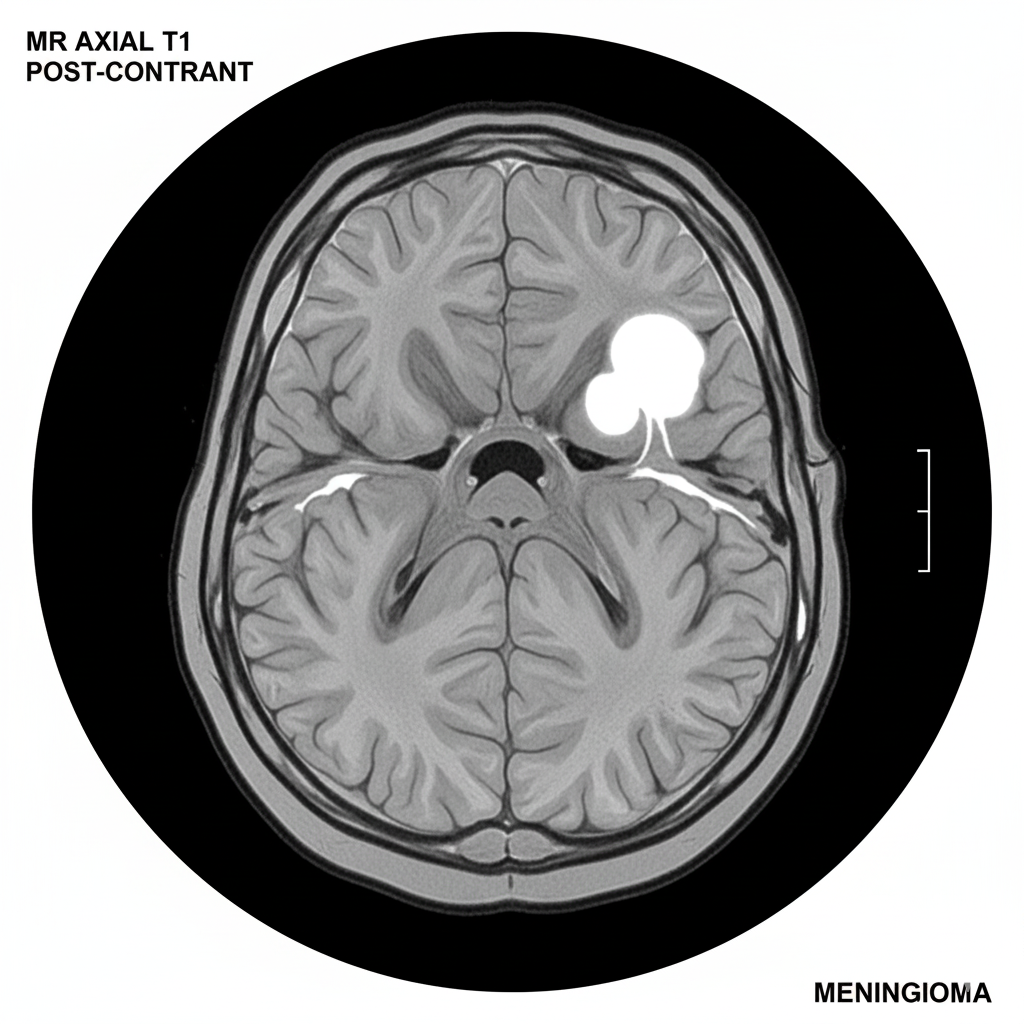
What is a Meningioma? Understanding the Most Common Brain Tumor
A meningioma is a type of tumor that arises from the meninges, the protective membranes that surround the brain and spinal cord. While the vast majority of meningiomas are benign (non-cancerous) and grow slowly, they can still cause serious problems by compressing the brain, nerves, and blood vessels. Meningiomas are the most common type of primary brain tumor, and they are more prevalent in women than in men, often being discovered in middle-aged or older adults. Their slow growth rate means they can exist for years without causing any noticeable symptoms.
Symptoms and Location of Meningiomas
The symptoms of a meningioma depend entirely on its size and location. A small tumor in a “silent” area of the brain may cause no symptoms at all and be discovered incidentally on an imaging scan. However, as the tumor grows, it can put pressure on the brain, leading to symptoms that can include headaches, seizures, vision changes, hearing loss, and weakness or numbness in the arms or legs. Since meningiomas can grow on any of the three layers of the meninges, they can affect any part of the brain or spinal cord, leading to a wide variety of symptoms.
The Role of MRI in Diagnosing Meningiomas
Magnetic Resonance Imaging (MRI) is the primary and most effective tool for diagnosing a meningioma. An MRI of the brain, often with a gadolinium contrast agent, provides a detailed, high-resolution image that can clearly show the tumor’s size, shape, and exact location. The contrast agent is particularly important because it makes the tumor “light up” brightly on the scan, distinguishing it from the surrounding healthy brain tissue. A classic sign of a meningioma on an MRI is its attachment to the dura mater, often with a characteristic “dural tail” sign. The precise information provided by an MRI is essential for a neurologist or neurosurgeon to determine the best course of treatment, whether it be observation, surgery, or radiation.

What is the difference between a meningioma and other brain tumors?
A meningioma is a tumor that grows from the brain’s protective membranes (meninges), not from the brain tissue itself. This distinction is important for understanding its growth pattern and prognosis.
Is a meningioma always cancerous?
No. The vast majority of meningiomas are benign (non-cancerous), but they can still cause problems by putting pressure on the brain.
What are the main symptoms of a meningioma?
Symptoms vary by location but can include headaches, seizures, vision problems, and weakness. Many small meningiomas are asymptomatic and are found incidentally.
How does an MRI help diagnose a meningioma?
An MRI is the gold standard for diagnosis. It provides detailed images that show the tumor’s size, location, and its characteristic attachment to the dura. A contrast-enhanced MRI is particularly useful for highlighting the tumor.
What is the “dural tail” sign on an MRI?
The “dural tail” is a radiographic sign seen on a contrast-enhanced MRI, which appears as a thickened, enhancing area of the dura mater extending away from the main body of the tumor. It is a classic sign of a meningioma.
What are the treatment options for a meningioma?
Treatment depends on the tumor’s size, location, and symptoms. Options include observation with regular MRI scans for small, asymptomatic tumors; surgical removal; and radiation therapy, particularly for tumors that are difficult to access surgically.
Can a meningioma be hereditary?
Most meningiomas are not hereditary. However, individuals with certain genetic conditions like Neurofibromatosis type 2 (NF2) have a higher risk of developing multiple meningiomas.
What is the prognosis for a meningioma?
The prognosis for a meningioma is generally very good, especially for benign tumors that are completely removed with surgery. Even for tumors that cannot be fully removed, treatment options can control their growth for many years.
Can a meningioma come back after surgery?
Yes. If the tumor cannot be completely removed, there is a chance it may regrow. This is why regular follow-up with MRI scans is important after treatment.
What is “gamma knife surgery”?
Gamma knife surgery is a type of radiation therapy that delivers a highly focused dose of radiation to a tumor. It is a non-invasive treatment option for some meningiomas, especially those in difficult-to-reach locations.
 English
English
 Türkçe
Türkçe
